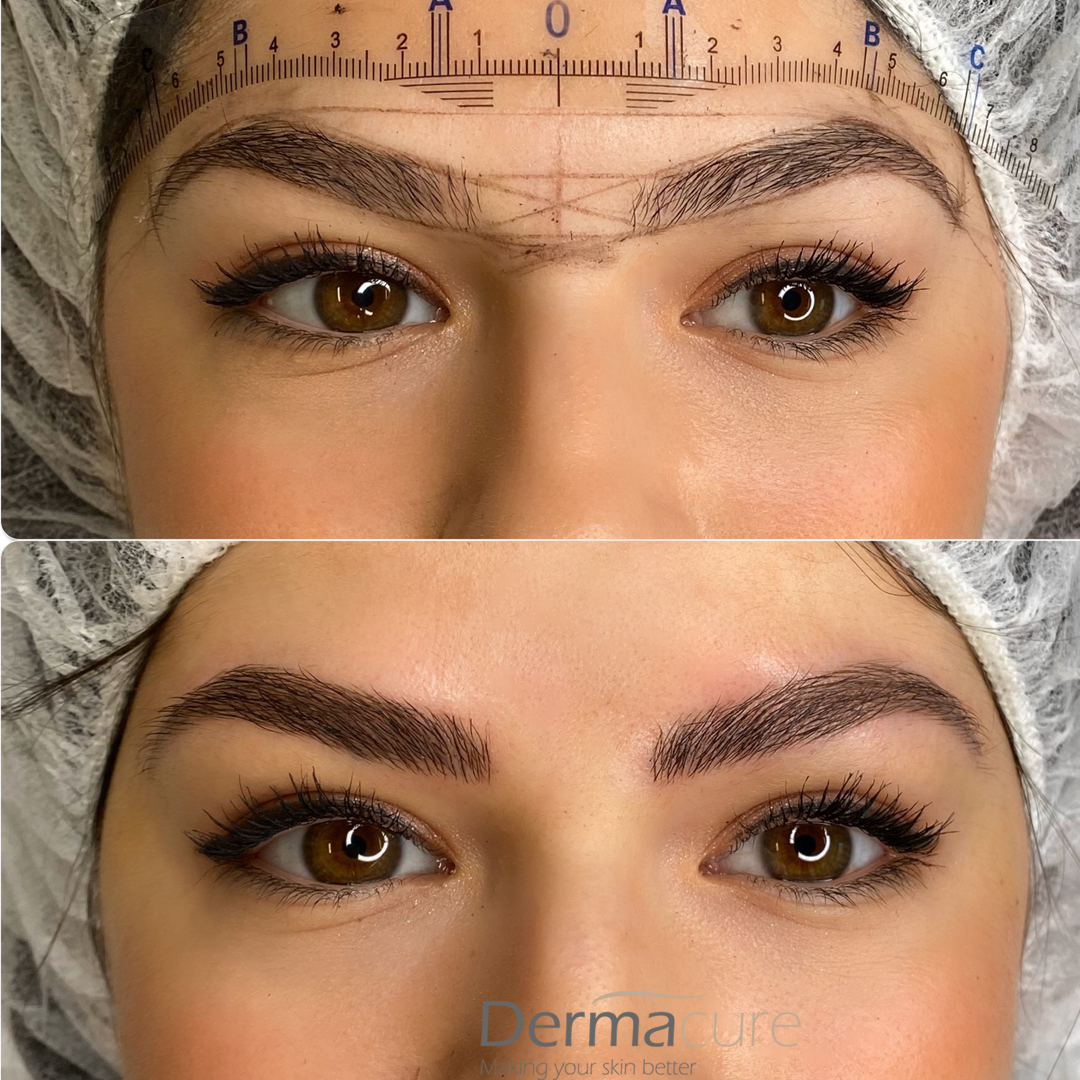

An infection in the eyebrow area is especially concerning if it reaches your bloodstream, because the area is so close to your eyes and brain. If the area swells, continues to scab after 2 weeks, or begins leaking pus, you should go to the doctor immediately. Any yellow-tinged discharge or excessive redness could be a sign of an infection. You should pay careful attention to the microbladed area to see if it becomes puffy or raised.

It’s not common to have severe pain in the affected area once you leave your technician’s office. It’s common to have some pain and discomfort during the procedure, and you might feel a slight residual stinging afterward.
#MICROBLADING RETOUCH SKIN#
Infections of the skin due to irritation or allergic reaction from the pigment is a possible complication. Applying a sunscreen to the microbladed area may help prevent fading. Apply any medicated cream or healing balm provided by your technician as directed.Īfter your skin is fully healed, you’ll want to protect your microblading investment by taking care of your skin.Keep your hair away from your brow line.Avoid saunas, swimming, and excessive sweating until the area is completely healed and you have a follow-up appointment.Don’t pick at scabs, tug, or itch the eyebrow area.This is because the pigments are still settling into the shallow cuts in your skin caused by the blading. Don’t wear makeup for at least a week.This includes keeping your face dry during a shower. Avoid getting the area wet for at least 7 days.It takes anywhere from 7 to 14 days for the skin to begin to appear healed and for the pigment to fade to its intended shade.įollow these steps to take care of your skin after microblading: This will get rid of any excess dye on your brows.

After all, needles are used to cut into the skin, so it’s typical to experience some redness and sensitivity immediately following.Ībout 2 hours after microblading, you should run a cotton swab dipped in sterilized water over the area. The pigment immediately following the procedure will appear quite dark, and the skin underneath it will be red. If you choose to microblade your eyebrows, you may want to stop using the following in your skin care routine:Īftercare for the skin where microblading took place is similar to tattoo care, if a bit more intensive. In addition to ensuring safe and responsible practices, you should also be aware of how your particular skin type might respond to microblading.įor example, a lot of microblading professionals believe people with dry skin will experience more satisfactory results than those with oily skin.Īlso, some skin care products may impact the results or the length of time the procedure lasts. It’s important to feel comfortable with the technician and in the space. While microblading is generally considered to be as safe as other forms of tattooing, there’s little medical research or clinical studies to back this up. If you don’t see your microblading technician open a new one when it’s time for your appointment, ask for a new tool or leave your appointment. The tool used for the microblading procedure should always be a one-time use, disposable instrument.


 0 kommentar(er)
0 kommentar(er)
